Dreadlocks and braids have become an essential topic of discussion as trends for both the two hairstyles are rising. You must know what distincts each hairstyle to understand what should you go for.
Understanding the difference between dreadlocks and braids will tell you the right goal to target according to the level of dedication and time you can allocate to it.
Dreads are twisted and kinky hair that appears to be coming directly from your scalp. Braids, on the other hand, have a smooth surface with an organized pattern of twists. Braids can be done in less than a day. Unlike braids, dreads take longer hair strands and a lot of time to grow. There are a lot of intricate factors that go into making dreadlocks and braid hairstyles different.
This article will clear all the clouds over the issue, and help you realize which hairstyle is the right for you.
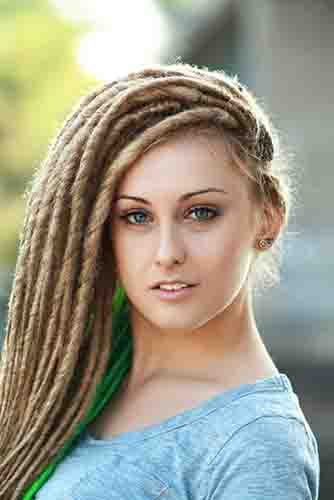
Table Comparing Dreads And Braids

| Braids | Dreads | ||
| Origin | Africa | Africa | |
| Types | French braids, box braids, fishtail braids, rope braids, lace braids, ponytail braids, etc. | Interlocking dreads, sport dreads, two strands twist dreads, freeform dreads, etc. | |
| Hair length needed for each hairstyle | Long hair length makes the process easier. But 2 inches also provide enough hair to create a hairstyle. | At least 6 inches is needed for growing dreads. Regular hair length does not grow up to dreads, long locks are needed. | |
| Installation methods | You can use readymade braids, or ribbons to get the hair braided using different techniques. | You can use synthetic dreadlocks, or get them done with your natural hair. You can consult a professional stylist, or do it yourself by undergoing the process. | |
| Installation time | Can be done in a few hours. Most braid hairstyles can be done within a day. A braid can be made with just three or more strands. | You might have to wait for your hair to naturally form into dreadlocks for weeks to months to even a year. | |
| Versatility | From simple ponytail braids to sophisticated rope hairstyles, there isn’t a shortage of options. | It is a myth that dreadlocks cannot be versatile. The reason is it’s actually difficult to apply a different hairstyle. Overall LifespanCan be undone very easily, but it will have a frizzy appearance with time. | Given that everything with your hair is perfect, dreads can last a lifetime. But removing dreadlocks is difficult. |
| How it looks and feels | A braid looks very casual, especially the mediocre styles. Braids look like overlapping zigzag shapes. | Dreads create a bold impression about you amongst others. But they feel very heavy and tight on your head. | |
| Maintenance | Braided hair needs little or no maintenance in extra. The average care routine to maintain your natural hair is enough. Prefer using organic products. | Dreads can easily turn to matted hair if ignored a single bit. Dreadlocks require very sensitive and intensive maintenance. Light products are key. | |
| Pros | Easily doable as well as removable. It is not a permanent hairstyle, so allows you to start anew. Doing it the right way will protect your hair from outside elements like dirt and moisture. | ||
| Cons | Not long-lasting enough. You will lose your style very soon even if you like it. | Very easy to get the dreadlocks wrong. Too difficult to take care of the hair. They can be painful to put in and take out, Smell bad if they are not cared for properly, |
What Are Braids?
Braids are created when three strands of hair or four are taken to twist within each other to create a style. You should have enough hair in terms of length to be able to comfortably make the braids.
Braids are said to have a protective impact on human hair as they tend to strengthen them naturally. A braid is a hairstyle where thin strands of hair are interlocked. Quite flexible in terms of adapting the style or shifting from it.
Note: Braids are done artificially, dreads can grow naturally although they can be created as well.
What Are Dreads?
Dreads and braids are similar hairstyles, but not the same. Unlike braiding which can be done by hand, dreads are more of a time-consuming and natural affair.
Dreadlocks can form all by themselves if a person decides to undergo low maintenance for their hair.
If your own hair type is genetically suitable for locks, then all you need to do is let them grow. Dreads require quite some time to grow, but the patience will be worth the effort if you really like the style.
Unlike strands in braiding, the locks on dreadlocks are much thinner. But a note of caution is that, once the traditional dread shape starts to form, you will have to significantly increase the maintenance of your hair.
The stage from normal hair to growing locks requires almost no maintenance. After they are formed, they call for difficult treatments like soft shampooing.
Note: Dreadlocks are a genetic thing as well. Some people might not have dreads of the same length as others with locks. Not everyone can grow dreads on their own.
Which Is Better Among Dreads And Braids?
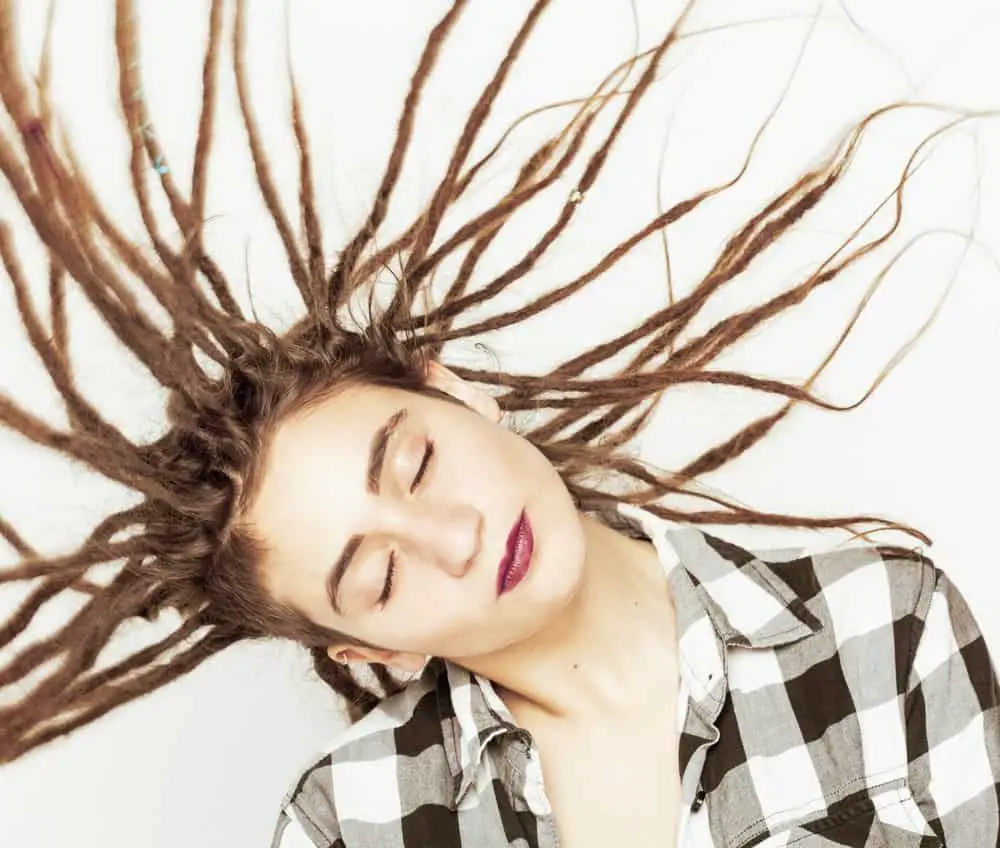
Hair Length Required
Dreadlocks: As mentioned in the table earlier, the length of hair required is about 6 inches. It will contribute to growing your dreads if you can keep your hair long. Short hair can also form dreadlocks. They need to be done through treatments going against their own characteristics.
Braids: A braid can be formed with even 2 inches of hair. Braiding is one of the most flexible hairstyles in terms of the length of hair needed. But braids allow you to move to almost any hairstyle you like after this.
Winner: Draw. Because dreads and braids are styles anyone with any hair length can adopt.
Cost of Hairstyle
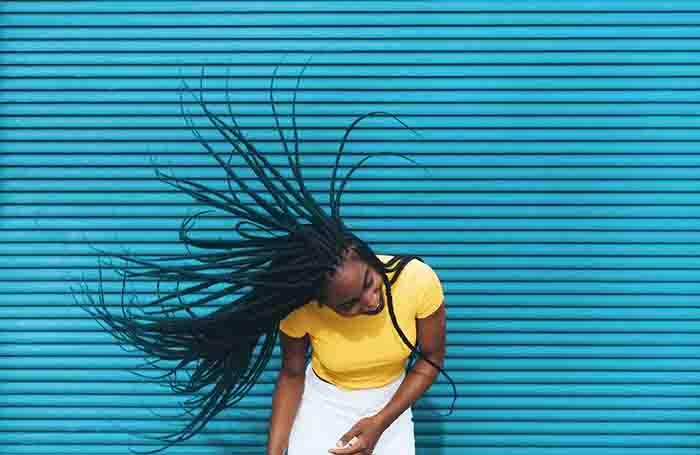
Dreadlocks: Since dreads are an affair for the long run, they cost more than braids. The cost is not to be levied upfront, but things like frequent washing, and spending on high-end residue-free shampoos add up as recurring costs.
Braids: You do not have to incur any extra costs. Persist with the normal things you do to maintain your black hair (no problem with other shades by the way). The maximum it can go is the cost of getting the hairstyles by a professional.
Winner: Braids as they are cheaper among these two styles.
Installation Time
Dreadlocks: Dreads can take from a week to almost a year to grow or form. Given that you do proper maintenance of your head and scalp, the dreadlocks can take shape in a few weeks’ time. But to be precise, your hair needs to go through a time-consuming process to get a rope-like appearance.
Braids: If you are doing it for the first time, it will take quite a long to finish. An expert can do it in hours depending on what style you want. But if the appearance of your hair is not satisfactory, then it can take time to reach the desired health level.
Winner: Braids, because restoring hair health does not take as intensive and long haul treatment as dreads. So, braids can be done quicker.
Versatility
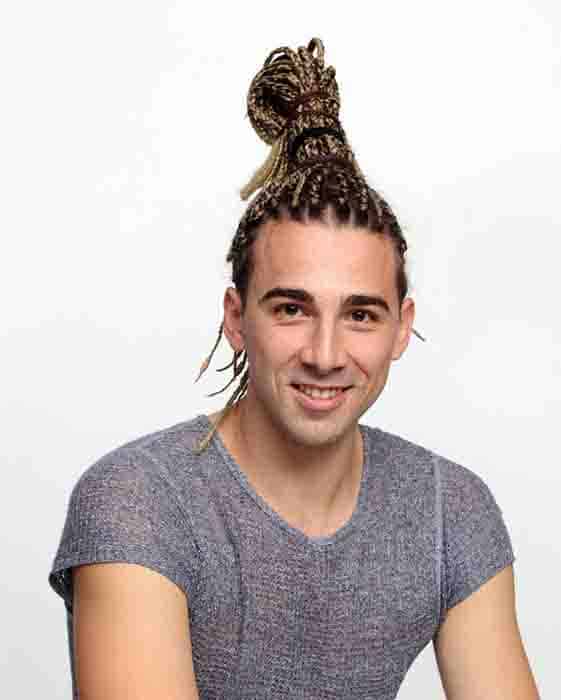
Dreadlocks: Dreads can be done in many ways, but they mainly revolve around how long the locs are. The hair locs can also be thick or thin. Dreadlocks can be maneuvered to fit your personality.
Braids: You cannot count the variety of styles you can achieve with braids. There is a match for everyone’s taste. And the interesting thing is that braids can be easily changed as well. Braids can help to give you extra volume, which can in turn make you look a bit fuller and therefore, heavier.
Winner: Although braids provide more flexibility, the result on this parameter is a draw. Neither dreads nor braids fall short.
Hairstyle Maintenance
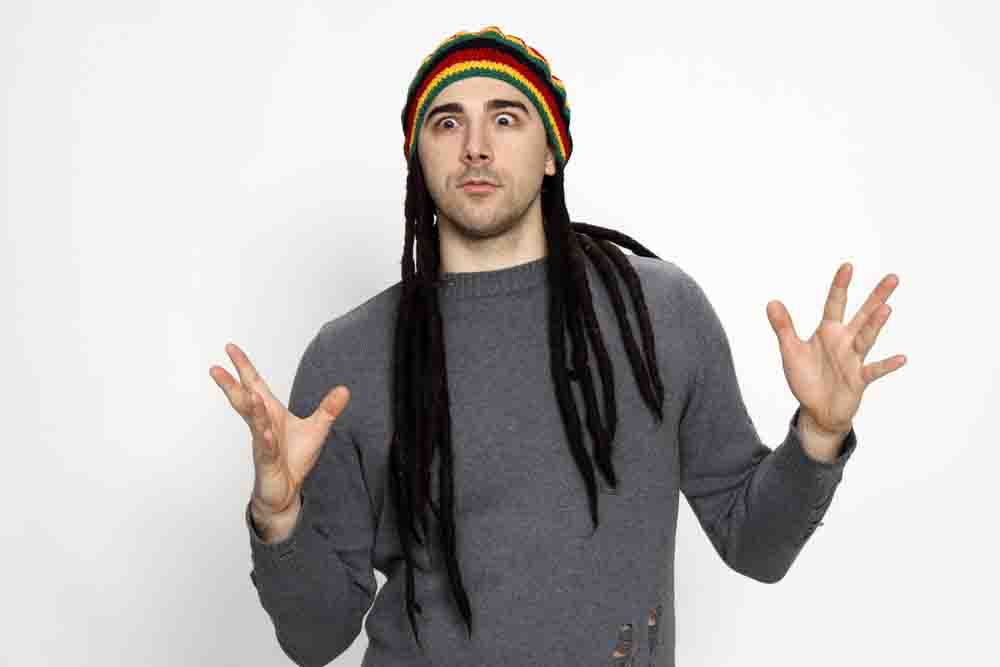
Dreadlocks: Dreadlocks are very difficult to manage. They require more attention, more specialized products, and treatments. The locs being vulnerable to surrounding damages adds up to the difficulty.
Braids: Braids do not require any extra attention for the hair. Any routine that suits you to keep your locs healthy is fine. But yes, maintaining the hair at the optimum level is necessary. Unhealthy hair won’t do the job. So a shift is important if the current methods do not work. Additionally, braiding wet hair can be more difficult than braiding dry hair, and it can also lead to more frizz and flyaways.
Winner: Draw, because braids are not as easy to manage as you think. It is easy to do the wrong things with your hair, so none of them are a piece of cake.
Longevity
Dreadlocks: Most people wear them for almost a lifetime if they are natural. And most locs are long-lasting if they form organically. But some major trims can take your locs back to normal again.
Braids: Can last a week or so if you keep it that way. But smooth and soft hair is key to longevity with braids. Rough and dry hair will break off easily.
Winner: Dreadlocks, they don’t finish unless you stop them yourself.
Risks Associated With Braiding/Dreading My Hair Strands
Dreadlocks: They put a lot of pressure on your scalp. Too much of it, and missing out on the sophistication of their maintenance can lead to hair loss, etc.
Braids: They require too much styling that can break the hair shafts. Interlocking the hair can cause severe hairfall. Treatments done to prepare the hair for braiding can also have an adverse impact on your hair.
Winner: Braids, because dreadlocks are an extreme thing. They have a lasting effect on your head. Braids can be controlled, natural dreads can’t.
If you are trying to decide whether go for braiding or dreading, here are a few additional points to look at.
The points are:
- Hair type. Some types are complementary for such styling, some are not. The ones that are not ideal need to be treated to that level.
- Scalp condition. If you have a sensitive-skinned scalp, then the locking process will be difficult for you as it will need the application of products.
- Commitment. If you are really into this style, you need to be dedicated to the dreading process. And if you are just trying it out, it’s better for you to go for braiding.
- Your budget. You will have to be ready to spend a lot on caring for your locs alone. It may not be suitable for you.
FAQs
No, they are not, they can easily be treated to the right conditions for the desired styling. The time to reach the level may differ. But a few weeks of treatment can cure your matted hair. Just take the right treatments and products.
Yes and no. If you like your locs and if they are naturally suitable, they can last forever. But some hair types do not allow it, and some people do it the wrong way. Everything has to be perfect for them to be permanent.
Locs can be natural as well as a fashion thing. Dreads are the result of a certain lifestyle. Both are similar and linked to each other, but there are differences as well.
Just hold the dreaded locs, use a comb or ribbon as per your comfort, and twist them. Make sure it does not end up being too tight. And also properly optimize the level of thickness you want.
Might sound surprising, but the answer is yes, you can put box braids over locs. The technique is in fact easier than you think. Do not complicate the process. Consult an expert stylist if you cannot do it yourself.
After you wash your locs, you can use a blow dryer to dry them into the desired position you want. Or else, you can use products like wax or gel. But these products can have a negative impact on the process.
No hair type is a barrier for both dreads and braids. Wavy hair in itself cannot be the reason to be good or bad for locs. There are more things that need to be taken into consideration to find if they complement them.
Traditional locs deal can be done with hands with bigger portions of strands. Sisterlocks need to be done using some special tools. And that also has to be done by taking smaller portions of the locs.
Too much interlocking is the main reason. When you try to forcefully get rid of the hundreds of tiny tangles on your hair shafts, they will end up breaking. But, this is what locs are all about.
Yes, but the twists are at a micro-level. So many twists altogether make the hair heavy and thick which creates the look.
Locs can be organic or artificial. Braids can only be created. Locs are a general term for hair, but braid is a name for hair fashion. Both are connected to each other, but not completely the same.
Cornrows are a special look that can be easily created and undone whenever you want. Dreadlocks are not like that, they can last for as long as you leave them.
Faux locs are temporary thing that is used to place box braids on your hair. Loc extension is going to be a mainstay. Both are important depending on what your requirement is.
Portions of shafts that have been allowed to interlock with each other. They grow in length as well as thickness over time.
Micro braids can turn into dreads, but the dreads will be much thinner. This is because micro braids are already very tight and don’t have much room to tangle and wrap around themselves.
Yes, hair can grow with dreadlocks. However, due to the twisting and matting of the hair, it may not appear to be growing as fast as it actually is.
It is not recommended to keep braids over locs for an extended period of time, as it can cause damage to the hair and scalp.
Hair growth is determined by genetics and overall health, so there is no definitive answer as to whether hair grows faster in dreads or braids.
Yes, locs can be undone through a process called “unraveling” or by cutting the hair.
Dreadlocks are considered a semi-permanent hairstyle, as they can take several months to years to form, but can be removed if desired.
Cornrows are a type of braided hairstyle, not to be confused with dreadlocks.
The braids that look like dreads are called faux locs or temporary loc extensions.
Dreadlocks can be a protective style for some individuals, as it requires less manipulation and styling than other hairstyles.
Dreadlocks can be formed naturally, but they can also be created through intentional twisting and matting of the hair.
There is no evidence to suggest that Vikings had dreadlocks.
Dreadlocks are real hair that has been twisted and matted together to form a particular hairstyle.
Hair that is naturally thick and coarse is typically best suited for dreadlocks, as it has a tendency to tangle and matte more easily.
Braids can potentially turn into dreadlocks if they are left in for an extended period of time and not properly maintained.
Keeping braids in for too long can lead to hair breakage and damage, as well as potentially causing the braids to turn into dreadlocks.
The length of time it takes for braids to turn into locs can vary depending on the individual’s hair type and how the braids are cared for.
Hair does not naturally turn into dreadlocks, but it can be intentionally manipulated and styled to create dreadlocks.
Hair that is thick and coarse is typically best suited for dreadlocks, but other hair types can also be styled into dreadlocks with proper care and maintenance.
Braids and cornrows are both types of braided hairstyles, while dreadlocks involve the twisting and matting of the hair.
When hair locs, it becomes tightly matted and twisted together to form a distinctive hairstyle.
Yes, dreadlocks can be undone through a process called “unraveling” or by cutting the hair.
Dreadlocks can potentially cause damage to the hair if not properly maintained, as the weight of the hair can pull on the scalp and cause tension.
Dreadlocks can potentially cause thinning of the hair if they are too heavy and pulling on the scalp.
Locs can potentially make hair stronger, as the hair is not subjected to as much manipulation and styling as with other hairstyles.
Braids can potentially damage the hairline if they are too tight or left in for too long.
Dreadlocks can thin at the root due to the weight of the hair pulling on the scalp, as well as improper maintenance and styling.
Dreadlocks cannot stop balding, as hair loss is typically caused by genetic factors or health conditions.
Dreadlocks can add weight to the hair, especially if they are long and thick.
“Locs” is often preferred over “dreads” due to negative connotations.
Personal decision, some believe it’s cultural appropriation.
Dreadlocks can and should be washed regularly with proper techniques.
“Dreadlocks” is still the most commonly used term.
Conditioner can leave a residue that can be difficult to wash out.
Jamaicans refer to dreadlocks as “dreads” or “locks”.
Dreadlocks have cultural and historical significance.
No, dreadlocks are formed intentionally with a specific technique.
Locs can be permanent, but can also be undone with proper techniques.
Verdict
Both the hairstyles need to be given cultural appropriation as both of them combine many cultures, European and African together. Dreads and braids represent western values as well. No negative connotations should be directed at this pure fashion statement. Every time you have doubts about it, just look at Bob Marley, and you will love them more than ever.

